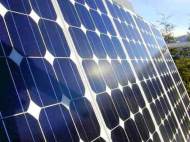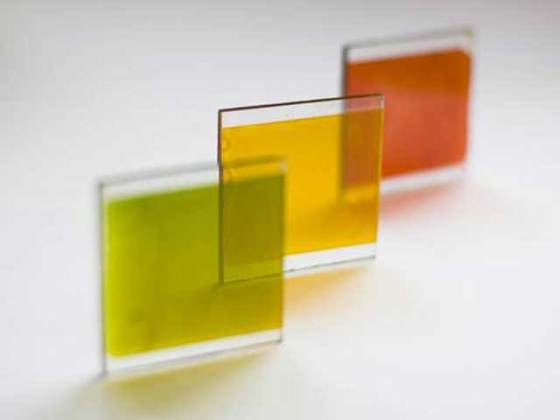Affordable and environmentally friendly solar cells from Oxford PV
 An Oxford company has developed new solar cell technology that is manufactured from cheap, abundant, environmentally benign and non-corrosive materials, and the ability to be scaled to any volume. The solar cells can be printed onto glass or other surfaces, and they are available in a range of colors. That makes them ideal for new buildings where solar cells could be incorporated into glazing panels and walls.
An Oxford company has developed new solar cell technology that is manufactured from cheap, abundant, environmentally benign and non-corrosive materials, and the ability to be scaled to any volume. The solar cells can be printed onto glass or other surfaces, and they are available in a range of colors. That makes them ideal for new buildings where solar cells could be incorporated into glazing panels and walls.
Oxford Photovoltaics (Oxford PV), formed with the help of Isis Innovation, Oxford University’s technology transfer company, has combined earlier research on artificial photosynthetic electrochemical solar cells and semiconducting plastics to create manufacturable solid-state dye sensitized solar cells. The technology was developed by Dr Henry Snaith, of Oxford University’s Department of Physics.
“One of the great advantages is that we can process it over large areas very easily. You don’t have to worry about extensive sealing and encapsulation, which is an issue for the electrolyte dye cell”, said Snaith.
These solar cells are in a form of thin film solar technology, but they have some advantages over the other existing thin film solar technologies. Leading thin film technologies are currently held back by the lack of minerals needed for their production. Other dye-sensitized solar cells are being hindered by the volatile nature of liquid electrolytes.
Oxford PV’s technology replaces the liquid electrolyte with a solid organic semiconductor, enabling entire solar modules to be screen printed onto glass or other surfaces. Green is the most efficient “semi-transparent” color for producing electricity, although red and purple also work well. The materials used are plentiful, non-toxic and very low cost.
The folks from Oxford PV predict that manufacturing costs of their product will be around 50% less than the current lowest-cost thin film technology and they expect that their new mechanism could eventually match the unsubsidized cost of electricity generated from fossil fuels. The technology could find its way into the wider application of photovoltaic materials because it can be used on the windows, walls, and other parts of buildings.
One of the disadvantages of this technology is the longevity of the solar cells (usually two to three years). However, the researchers from Oxford PV claim that their solar cells have the potential to last up to 20 years. They are also hoping they’ll be able to apply their technology on various other materials such as sheet steel, but they have started with glass because of its suitable properties. The demonstrated implementation of their technology on glass surface resulted with 8% efficiency of the cells.
“This technology is a breakthrough in this area. We’re working closely with major companies in the sector to demonstrate that we can achieve their expectations on economic and product lifetime criteria”, said Kevin Arthur, Oxford PV CEO.










Good product in the offing in solar cell field.
Dr.A.Jagadeesh Nellore(AP),India